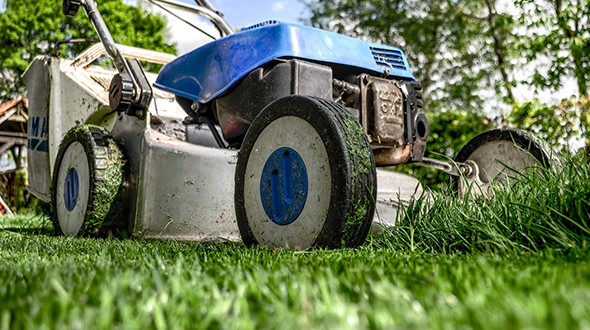
Avoid the embarrassment of a poorly landscaped front yard. Knowing how to design and grow a hardy landscape will help you contribute to your neighborhood’s beauty and benefit the surrounding ecosystem.
toddsmariettatreeservices.com gathered the following information on landscape design, plant, shrub, and tree species to help you assemble a stunning and healthy front yard.
Front Yard Design
You can develop a rough preview of your front yard landscaping using the following:
Draw Your Front Yard – Your scale drawing should include measurements, garden and feature location, tree and shrub location, where you want walkways and driveways, and list any preferred grass, plant, shrub, and tree species.
Site analysis – Have soil tests performed to ensure that your yard contains the appropriate mineral content and pH level to help your selected plant and tree species thrive.
Tip: The most efficient way to test your soil is to send a sample to a Cooperative Extension Service (usually located at or affiliated with your state’s university) or a commercial soil laboratory (search online for commercial soil-testing labs near me).
Hardiness Zone Definition – The USDA Plant Hardiness Zone Map is the recognized standard gardeners and growers use to determine which grass, plant, shrub, and tree species are most likely to thrive at a location. The map is defined and segmented by the average annual minimum winter temperature. To define your hardiness zone, use the interactive map at planthardiness.ars.usda.gov/
Prioritize Landscape Needs and Wants – You may “want” to have a lush green lawn with water features, but your neighborhood may require strict water usage policies leaving you “needing” a more water-conscious design.
Inform yourself about any water, land, or species restrictions by looking over your HOA agreement, city website, or municipal codes found at this interactive website library.municode.com/
Note: Some cities or municipalities will list preferred and/or banned trees and plants to help avoid planting any invasive or damaging species.
Consider Yard Maintenance Requirements – Each type of landscape you install will require different levels of attention and maintenance. The more trees you install, the more seasonal pruning will be necessary. The more grass you have, the more mowing and trimming you’ll have to do. If you don’t plan on hiring a landscaping and tree service to help you with your yard’s upkeep, you must ask how much work and devotion you are willing to commit to it.

Determine a Budget – Your ideas for a spectacular front yard will come with a price tag. For each of your yard’s components, you should quote the required material, individual trees and plants, fertilizer, mulch, gravel, concrete, lighting, etc.
Tip: When your front yard design is complete, use it to quote landscapers and tree services installation and eventual maintenance charges.
Identify Patio, Porch, and Sitting Areas – Take the time to map out the area around the home that can be used for lounging, container gardening, etc.
Plant Native Species
When planning your front yard landscaping, include as many native grasses, plants, shrubs, and tree species as possible. Some native species benefits include:
- Being Low Maintenance
- Requiring Less Water
- Attracting Local Pollinators
- Producing Beautiful Flowers
- Serving as Food and Shelter for Native Wildlife
Native species are more robust and well-adapted to your environment, lending to a more attractive and engaging landscape.
Best Front Yard Trees
When selecting a tree as your front yard’s center of attention or specimen, consider the species, size at maturity, and hardiness zone. The following are popular front yard and specimen trees:
Serviceberry (Amelanchier) This species reaches 15 to 25 feet high and has a spread of 15 to 25 feet. This tree thrives in zones 2 through 9.
Crabapple (Malus) This fruiting species reaches 6 to 10 feet high and has a spread of 6 to 12 feet. The species thrives in zones 3 through 8.
Chinese Dogwood (Cornus kousa) This beautiful tree species reaches 15 to 25 feet high and has a spread of 25 feet. This tree thrives in zones 3 through 8.
Japanese Maple (Acer palmatum) This species reaches 15 to 25 feet high and has a spread of 20 feet. This maple variety thrives in zones 5 through 8.
Eastern Redbud (Cercis canadensis) This stunning species reaches 20 to 30 feet high and has a spread of 25 to 35 feet. Redbud trees thrive in zones 5 through 9.
Southern Magnolia (Magnolia grandiflora) This impressive species reaches 60 to 80 feet high and has a spread of 40 feet. This popular specimen tree thrives in zones 5 through 9.

Lemon Trees (Citrus limon) This fruiting species reaches 10 to 20 feet high and has a spread of 8 to 12 feet. This magnificent tree thrives in zones 8 through 11.
Tip: Consult your local nursery or arborist for planting and specific tree variety recommendations. They will also have information regarding potential disease threats and insect infestation warnings.
Front Yard Landscaping
In this article, you discovered information to help you design your front yard landscape and determine which grass, plant, shrub, and tree species to plant.
Planning your front yard landscape will help you visualize the finished product and develop an eco-friendly environment that blends in with your neighbors’ yards while expressing your unique style and taste.
Leaving your front yard as it is (in disarray) will leave you embarrassed and potentially lower your home’s curb appeal and value.
Sources:
extension.missouri.edu/publications/g6905
extension.psu.edu/why-use-native-plants
hgic.clemson.edu/factsheet/serviceberry/
extension.colostate.edu/topic-areas/yard-garden/flowering-crabapple-trees-7-424/
plants.ces.ncsu.edu/plants/cornus-kousa/
edis.ifas.ufl.edu/publication/ST023
hort.extension.wisc.edu/articles/eastern-redbud-cercis-canadensis/
landscapeplants.oregonstate.edu/plants/magnolia-grandiflora
hort.purdue.edu/newcrop/morton/lemon.html
(678) 505-0266
Originally published on: http://www.toddsmariettatreeservices.com/how-to-landscape-my-front-yard/

No comments:
Post a Comment